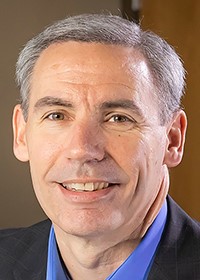It’s time for our communities to make a power play
by March 13, 2022 10:02 am 1,046 views

Over $8 million is headed to Arkansas in 2022 under the new National Electric Vehicle Infrastructure (NEVI) program to build a national electric vehicle (EV) charging network. Now the scramble is on to develop a strategy of implementation.
The federal guidance creates a national network along the interstate system to allow EV drivers reliable access to charging stations from coast to coast. The federal guidance aims at convenience to the user.
Here’s an opportunity for our communities to make a real power play. State and local officials should strongly consider a strategic approach to the placement of these charging stations. Federal guidelines require charging stations “every 50 miles and within one travel mile of the interstate.” Let’s identify impactful locations to introduce the Natural State and the exceptional communities we live in.
It might be appealing to a traveler to take a 30-minute nap at a highway rest stop while their car charges, but what if they had an option of touring a world-class museum like Crystal Bridges Museum of American Art, lunch and shopping at the Promenade, or a bike ride at Kessler Mountain. NEVI presents community leaders with the opportunity to introduce travelers to their community’s greatest assets during a recharge.
Communities should identify their top attractions — parks, trails, museums, shopping, entertainment — and position charging stations highlighting those assets.

Community leaders also have the civil duty to consider the financial opportunities associated with this network of EV charging stations. When installing EV charging stations at the local “ride-share” lot, the only financial gain is the $12 generated at the end of a plug. But when community leaders install charging stations in locations that send foot traffic to restaurants, shopping and attractions, they are now generating revenue for local businesses and tax dollars to improve our communities. The real economic opportunity for the community is in the $100 spent while they wait. (The charge on the card, not the car charge.)
Federal guidelines also require the installation of the charging station on public or publicly accessible property. That may work out perfectly for some parks or trailhead locations. In more commercial areas (where restaurants and shopping abound), public land may be more challenging to come by. Municipalities can consider purchasing the necessary land to create an “EV Pocket Park” in a walkable commercial area. Community leaders may need to get creative with local businesses to create public access easements into under-utilized parking areas that might be perfect locations for EV charging stations.
The federal program is aimed at convenience. Let’s be smart about conveniently locating charging stations close to places that can make a difference in Arkansas’ growth by capitalizing on purposeful planning.
What an invaluable opportunity to say, “We are charged you are here. Welcome to our community!”
Brent Massey is a principal and vice president of operations for Bentonville-based CEI Engineering Associates. The opinions expressed are those of the author.
